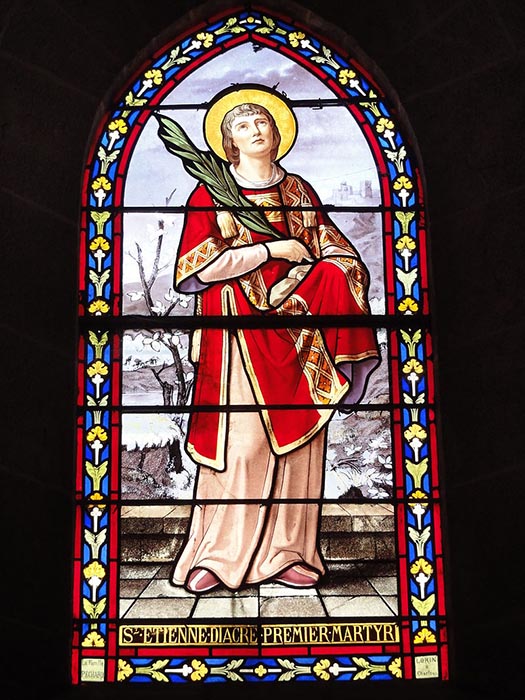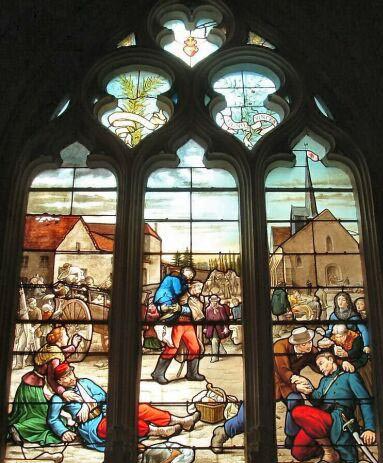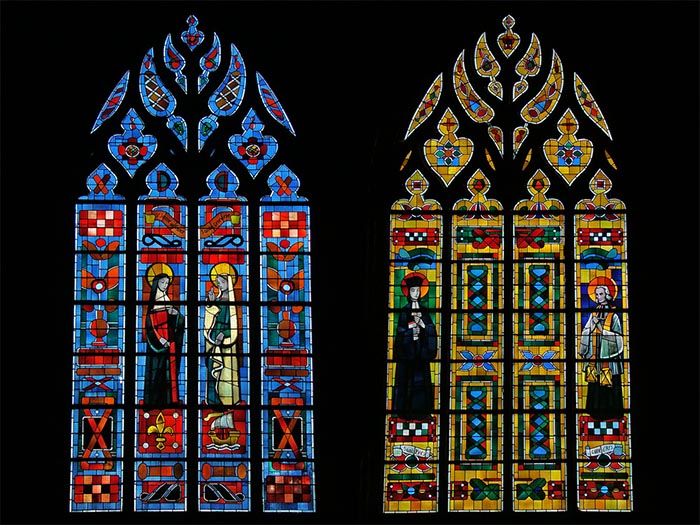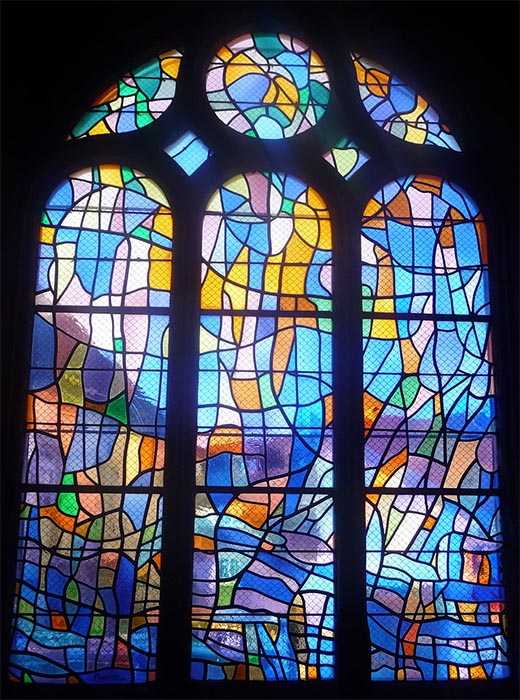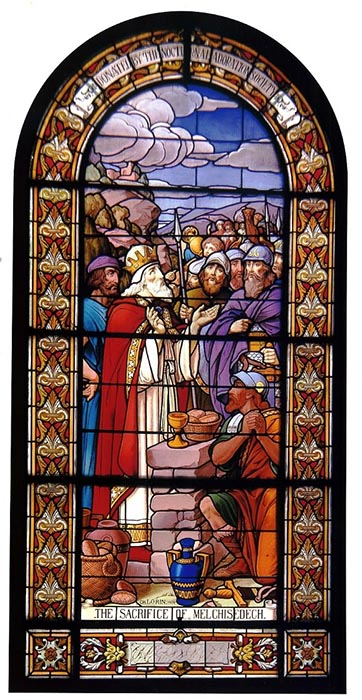The Maison Lorin
Download PDFThe Maison Lorin is a remarkable stained glass factory in activity since 1869 in Chartres, which 19th century buildings equipped with large windows are listed historical monuments. The excellent quality of its products and its aesthetic power have rapidly promoted the Maison Lorin on the forefront of the nation and world stages. An impressive amount of french churches are provided with Lorin stained glass windows, which makes this workshop one of the main and emblematic factories where is still carried on today the art of stained glass.
Nicolas Lorin (1833-1882), who had been noticed when he started at Le Mesni-Saint-Firmin factory circa 1863-1864, creates his own studio in 1869. He realizes then twenty-three stained glass windows for Saint-Anne Church of Amiens, with Charles Crauk’s “cartons” sketches. Around 1870, the Neoclassic painter Charles Crauk, a reputed artist, is his main partner, but the studio will regularly work with other talented artists to attend to the compositions quality : Lionel Noël Royer (student of Cabanel and Bouguereau), Queynoux M.P., Michaut, Martin, Julian, Revel, Léon, Dubois, Sauvé.
By 1880, the studio Lorin is already a big factory, counting 53 employees, a studio in Chartres, a sketch studio in Paris, and a shop in Lille. The art world notices these windows’ authentic attention to hand-crafted quality, in a context where the loss of crafts is lamented.
When Nicolas Lorin dies in 1882, his widow Marie Françoise Dian runs the studio until their son, Charles Lorin (1866-1940), takes it over in 1898. At the bottom of fabulous stained glass windows she sometimes signs “veuve Lorin”, just as in that of Sainte-Marie-Madeleine in Marcoussis (Ile-de-France), in 1887, or just “Maison Lorin”.
The Maison Lorin made exceptional stained glass windows in these years, like the Saint-Aignan Church’s, in Chartres (between 1887 and 1891), that are listed historical monuments. In the enthusiasm aroused by this art and craft, several churches will order broad series of windows, like the twenty-one of Saint-Denis in Toury (Loire, 1890-1899), and the forty-five of Saint-Aubin in Houlgate (Normandie, 1882-1897).
Attending many exhibitions of the late 19th century, the studio already famous is called upon the decoration project for the Palais des Machines, an ephemeral building at the World's Fair of 1889 . For this event, it creates a stained glass window representing the Sun’s chariot. Then, at the Exhibition of Arts applied to Industry in may 1894, Charles Lorin and Charles Crauk associate to pay a powerful tribute to the fallen soldiers in 1870’s conflict with Prussia.
Charles Lorin will realize works in line with his father’s, as witnesses the delicate grisailles and vivid colors of Notre-Dame-du-Rosaire’s windows in Saint-Ouen (Ile-de-France), made around 1910. His son, François Lorin (1900-1973), takes the reins of this precious family craft, adapting it to 20th century tastes. The Saint-Leonard Church of Fougères (Bretagne) owns four windows signed by his hand in 1959. The successors Hermet and Juteau, current owners of the factory since 1973, have likewise known how to attend to new demands, with the sixteen windows of Saint-Bénigne in Pontarliers (Burgundy) for example. Dated 1974-1975, they deliberately turn to abstraction with Alfred Manessiers’ cartons, a master of abstraction in France.
The realizations of studio Lorin since its creation have this deeply committed their work in a tradition of hand-craft and esthetic excellency. The reputation of this studio enabled it to provide windows all around the world, in Jerusalem, New-York, Vienna or even Saigon.
Bibliography
Mérimée Database, Ministry for Culture : http://www.culture.gouv.fr/public/mistral/merimee_fr?ACTION=CHERCHER&FIELD_1=REF&VALUE_1=PA28000006, consulted 07/12/2016.
International Stained-Glass Center’s website : http://www.visiter-chartres.fr/fr/chartres-sorties-culturelles-groupes-adultes/latelier-lorin/ , consulted 07/12/2016.
Laurence de Finance Un patrimoine de lumière 1830−2000. Verrières des Hauts-de-Seine, Seine-Saint-Denis, Val-de-Marne. Éditions du patrimoine (Centre des monuments nationaux), Paris 2003.




